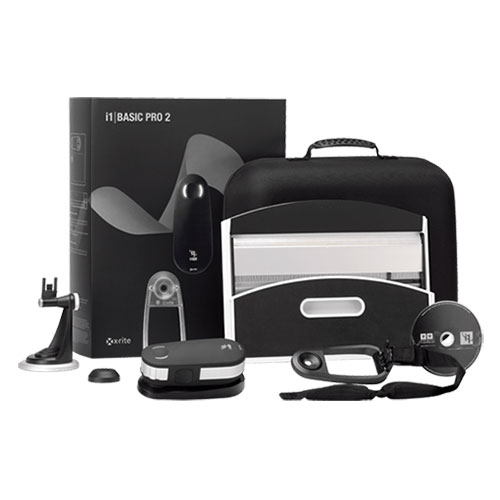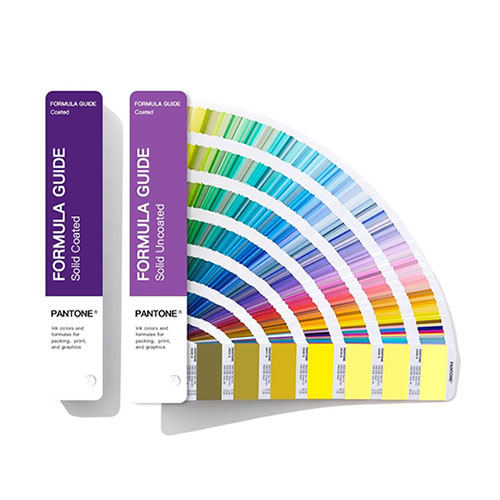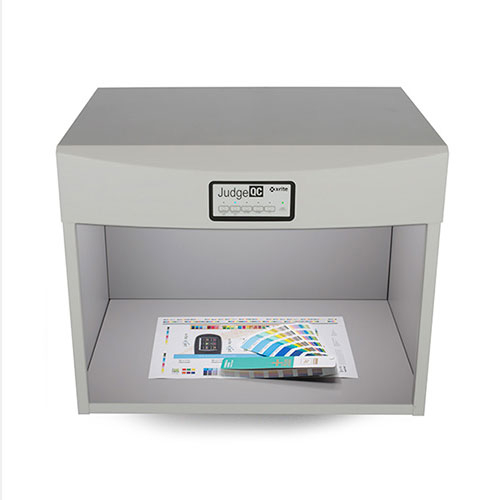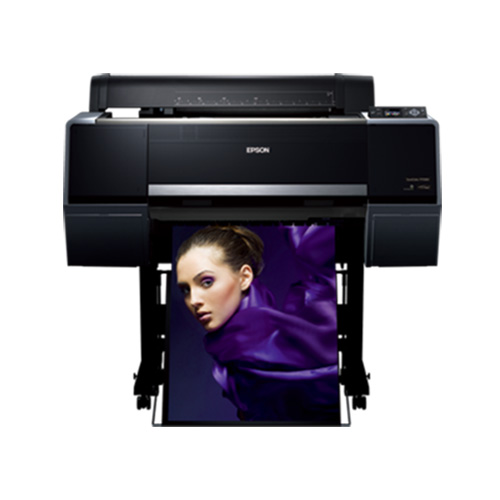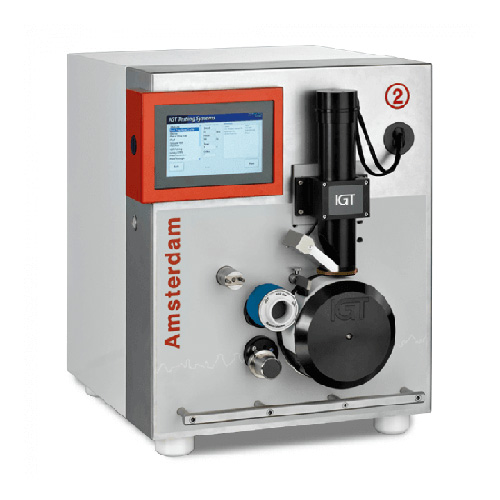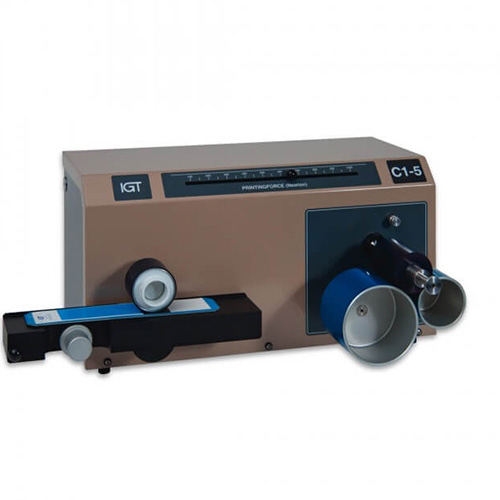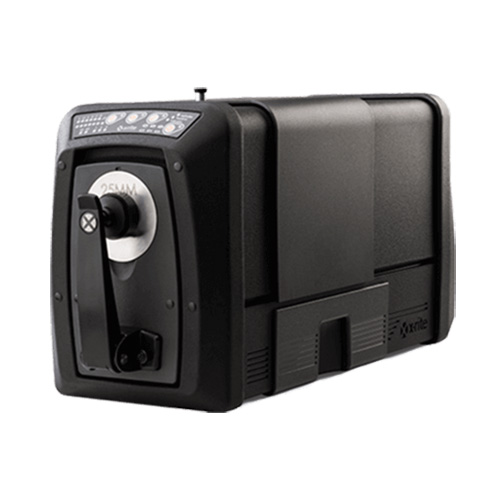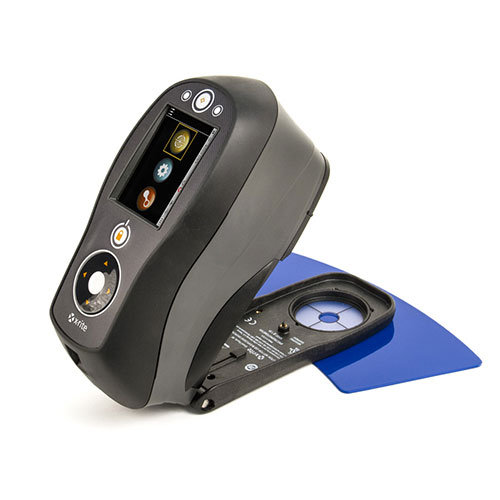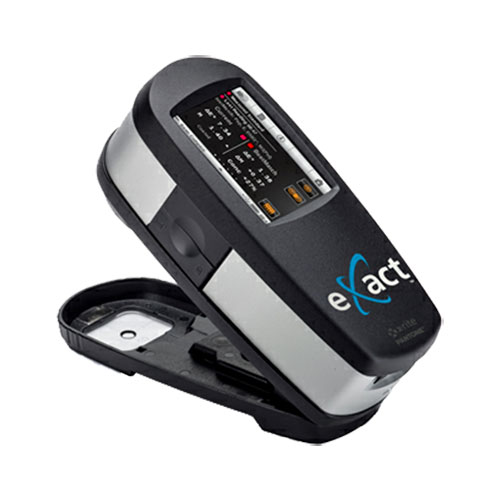TAPPI/ANSI T 830 om-18 Ink rub test
TAPPI/ANSI T 830 om-18
PROVISIONAL METHOD – 1992
STANDARD PRACTICE – 1999
OFFICIAL METHOD – 2004
REVISED – 2011
REVISED – 2018
Ink rub test of container board and corrugated board
1. Scope and summary
Ink rub testers are designed to evaluate the scuffing or rubbing resistance of an ink film or fiber surface on container board and corrugated board. A variety of tests may be made, including: dry rub; wet rub; heated rub; wet bleed or transfer; wet smear; and functional rub.
2. Significance
This method evaluates resistance of inks to either dry or wet rubbing or scuffing. It can also be used to evaluate dry or wet surface strength of coated containerboard. unprinted container board, and other similar surfaces as well as the smearing or bleeding of inks. A heated platen can also be used to evaluated heat resistance of inks and varnishes. Some use this test to differentiate between strong and weak ink films and their adhesion to container board. This test examines rub resistance under different conditions than some other types of scuffing or rubbing tests (c.f. BS-3110) and should not be expected to produce results identical to other methods.
3. Apparatus
3.1 Ink rub testers are motor driven devices for moving a weighted test specimen over a printed or unprinted sample. The weighted specimen should travel (using any appropriate mechanical means) through an arc of 8.5° ± 0.5° , or along a linear or almost linear path of approximately 3.9 cm (1.54 in.), for a predetermined number of strokes.
3.1.1 A stroke comprises one complete to-and-fro motion of the test weight.
3.2 Test speeds can be selected from fixed speeds of 21, 42, 85 and on some models 106 cycles per min. Test speeds should be accurate to within 2%.
3.3 The typical apparatus comes with one or more weighted sleds in order to apply different contact pressures to the surface being rubbed. Higher test speeds and contact pressures are used to increase the severity of the test without increasing the time or the number of strokes required.
3.3.1 Customary weights include 908 g ± 45 g (2-lb ± 0.1 lb) and 1816 g ± 90 g (4-lb ± 0.2 lb) each having 51.6 cm2 (8 in.2) of contact area. Thus, a 908 gr. (2-lb) sled has a contact pressure of 1.7 kPa (0.25 psi), and a 1814 gr, (4-lb) sled has a contact pressure of 3.4 kPa (0.50 psi).
3.3.2 The test sleds shall be fitted with an open cell Neoprene rubber pad 0.32 cm (0.13 in.) thick with a compressibility such that 172 ± 34 kPa (25 psi ± 5 psi) shall compress the pad to half of its original thickness.
NOTE 1: Some users have increased contact pressure by reducing the size of the rubber pads on the bottom of the sleds.
3.4 Some instruments have pins on the bottom plate to secure the sample. The pins will hold corrugated board in place during testing. Some instruments provide a hold-down bracket to secure the bottom sample. Some instruments may not have protruding pins or a hold-down bracket; if not, samples can be secured with double sided tape. Foam tapes, which may provide cushioning, should not be used.
3.4.1 Some instruments have a Neoprene rubber pad (similar to 3.3.2 above) on the surface of the bottom plate. The friction between the pad and the bottom sample can, in addition to pins, clamps, and tape, help keep the bottom sample piece from shifting during the test.
4. Sampling
4.1 Select specimens of container board for testing from undamaged areas. Avoid wrinkled or folded areas which may affect the test results. Corrugated test specimens should not include scores or slots.
4.2 Cut 5 top specimens 51 mm (2 in.) wide and of sufficient length to be secured under the spring clips of the desired top block in each of the two principal directions. Allow 25 mm (1 in.) on each end of the top block to fit into the metal clamps. Cut 5 bottom specimens at least 152mm × 76mm (6 × 3 in).
4.2.1 Unless otherwise noted or required by specific customer testing specifications, container board samples should be cut so that the MD direction runs the width of each sample.
4.2.2 Unless otherwise noted or required by specific customer testing specifications, corrugated samples should be cut so that the MD paper direction runs with the direction of platen movement. This will typically result in the flute peaks rubbing across each other during the test.
4.2.3 In some cases, the top or bottom specimen may come from unprinted stock or from copy paper or other white substrates upon which ink transfer can more easily be observed. Ink transfer from the specimen should be observed against the unprinted stock.
5. Conditioning
Precondition and condition the specimens in accordance with TAPPI T 402 “Standard Conditioning and Testing Atmospheres for Paper, Board, Pulp Hand sheets and Related Products” prior to testing.
6. Procedure
6.1 The test procedure is typically performed until failure is observed on the sample. Failure is defined by customer specifications and requirements, and may include visible ink transfer to unprinted stock or to copy paper, surface abrasion, or smearing of the printed image. The test procedure may be performed under a variety of test conditions, with different possible test speeds and contact pressures, as required by the customer.
6.2 Samples are usually evaluated by visually comparing them to internally maintained standards. The result is usually a pass or fail designation. It is also possible to evaluate samples using a densitometer or spectrophotometer. The initial reading before the rub test is designated as zero and the change in density or delta E after the rub test is reported.
6.3 Dry rub.
6.3.1 Clip a 152 × 51 mm (6 × 2 in.) unprinted specimen to the test block. Place the printed sample, print side up, on the base plate. Place the weight over the sample, and make sure that both surfaces are free of dirt. Preset the tester for a series of ten strokes, or as otherwise indicated by the customer.
NOTE 2: Higher presets can be used if experience indicates a high number of strokes will be needed to initiate transfer.
6.3.1.1 If identification of ink transfer is required, the material on the sled is typically unprinted, while the printed specimen is placed print side up on the base plate.
6.3.2 When the first series of strokes have been completed, examine both the inked surface and the plain surface on the test block for signs of transfer. Repeat the stroke sequence until transfer occurs or a predetermined limit is reached. The two test strips should be stapled together and used for visual reference and interpretation. They should be marked plainly with the number of strokes at which transfer or abrasion was observed, as well as with the test speed, test block weight, and conditions.
6.4 Wet rub
6.4.1 Mount the strips in the same manner as for dry rubs, using the 0.9-kg (2-lb) or 1.8-kg (4-lb) test block. Set the test apparatus to run continuously
6.4.2 Place three to six drops of water on the printed surface so that they would be covered by the test block. Place the block in position and immediately press the start button.
6.4.3 After one stroke, observe the surface of the board for fuzz, abrasion, or color transfer. Any of these conditions indicates the end of the test. Repeat single strokes until failure is noted. The two test strips should be stapled together and used for visual reference and interpretation. They should be marked plainly with the number of strokes at which surface failure was initially observed, as well as with the test speed, test block weight, and conditions.
NOTE 3: Wet rub is usually a quick test, with samples failing in less than 25 strokes.
6.5 Wet bleed or transfer.
6.5.1 Make a strip of blotting paper or cotton cloth (see TAPPI T 205 “Forming Hand sheets for Physical Tests of Pulp”) 152 × 51 mm (6 × 2 in.) mount on the test block with the felt or smooth side out and saturate the blotter or cotton cloth with water (an eyedropper is convenient).
6.5.2 Place the wet blotter or cotton cloth on the printed sample to be tested and leave it in place for 4 min. Remove the block without rubbing, and examine for ink transfer to the blotter or cotton cloth. Use the same blotter or cotton cloth for checking wet smear.
6.6 Wet smear.
6.6.1 Return the wet-bleed block and blotter to the inked sample and actuate the tester for one stroke. Examine the blotter for color transfer. (The notation of wet bleed should also be recorded on this sample.)
6.7 Functional rub. Functional rub is a term embracing a number of miscellaneous uses for the ink rub tester. An ink which is acceptable under one of the above test procedures may fail in use as a result of exposure to other liquids or pastes. For example, certain inks might be tested to conform to specifications such as “one rub, cod liver oil” or “three rubs, toothpaste” Functional tests are limited only by the ingenuity of the operator and the many uses being found for printed paper or paperboard surfaces. In reporting functional rubs, the operator should specify the number of rubs, the time of contact before rubbing, and the special conditions and testing mediums employed.
NOTE 4: Few, if any, inks will pass rubbing, wet or dry, without a slight transfer of color. Decisions on the suitability of an ink are best made by running comparative tests, checking an acceptable ink at the same time and under the same conditions.
7. Report
7.1 Report the following:
7.1.1 The number of strokes to ink rub, wet smear, surface disruption, etc.
7.1.2 The weight of test block used, 0.9-kg (2-lb) or 1.8-kg (4-lb).
7.1.3 The model and cycles per min. of the ink-rub tester used.
7.1.4 Contact area used.
8. Evaluation
Samples are usually evaluated by visually comparing them to internally maintained standards. The result is usually a pass or fail designation. It is also possible to evaluate samples using a densitometer or spectrophotometer. The initial reading before the rub test is designated as zero and the change in density or delta E after the rub test is reported.
9. Precision
Due to the variability of the inks used, the ink films tested and the subjective nature of the end point of this test method, a precision statement is not applicable.
10. Keywords
Corrugated boards, Fiberboards, Container boards, Ink rub resistance
11. Additional information
11.1 Effective date of issue: April 17, 2018.
11.2 This method is essentially identical to ASTM D5264 – Standard Practice for Abrasion Resistance of Printed Materials by the Sutherland Rub Tester.
11.3 Other types of rub and scuff tests include TAPPI T476, BS-3110, BS-3900, ASTM F1319, and various ISO standards. While these methods all probe the wear process, their conditions are different and correlation between these methods is not generally possible.
11.4 This was formerly Useful Method UM 487, became a Provisional Method in 1992, as was reclassified as a Standard Practice in 1997.
11.5 The 2011 revision addressed confusion over sample directionality when not specified in an outside performance requirement, and restructured the document into the decimal system of paragraph numbering.
上海备得数码科技有限公司作为专业的实验室仪器供应商,可提供多种类型的耐磨擦仪、磨擦试验机以及相关配件耗材,同时提供仪器使用培训、维修校准、技术支持等售后服务,如有相关需求欢迎随时联系我们!
相关产品链接:SUTHERLAND2000耐磨擦仪
如需了解更多磨擦仪产品和知识,欢迎访问https://www.ibetter.com/mocayi
- 2020-05-20
- 2019-01-01
- 2015-11-05
- 2020-06-04
- 2021-01-03
- 2020-05-13
- 2020-05-17
- 2022-04-12
- 2020-03-21
- 2019-12-06
- 2019-08-01
- 2019-08-01



